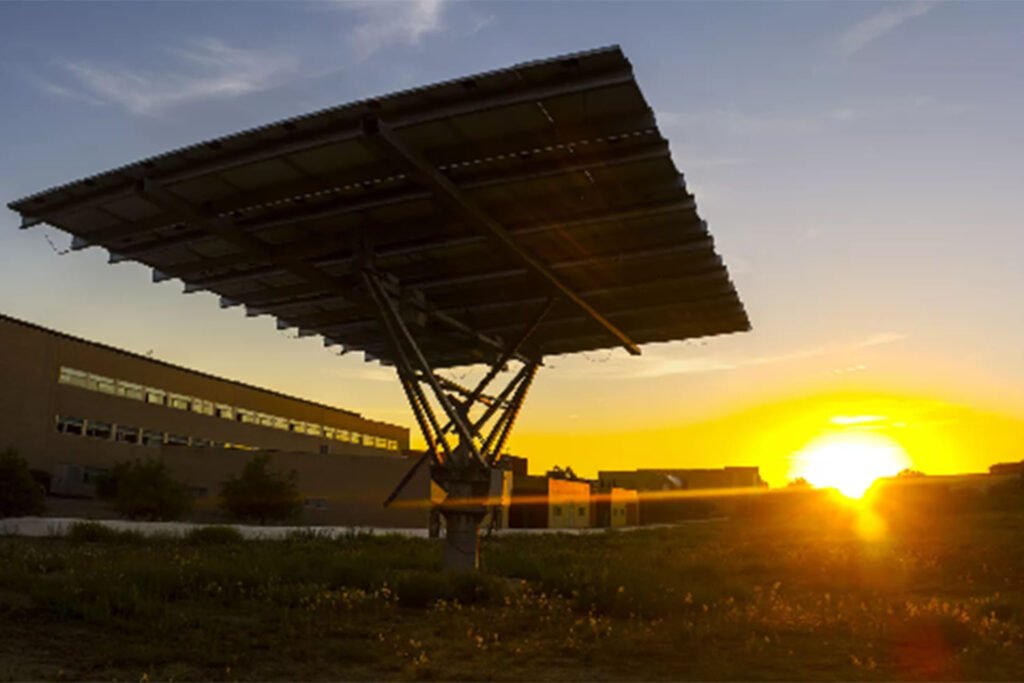
Solar trackers can increase the efficiency of solar panels and reduce the payback time for solar owners to recoup their installation costs. While they are more common on commercial-scale and ground-mounted solar panels, some designs can also be installed on flat or low-slope rooftops. Whether they are worth the extra cost or not depends on a number of factors.
How Solar Trackers Work
Solar trackers are support structures that allow solar panels to follow the path of the sun and absorb more solar radiation. They can increase the efficiency of the panels by anywhere from 10% to 45%, depending on the type of tracker.1 Because of the cost of the hardware and installation, they are more commonly seen on large-scale solar projects like community solar farms than on individual residences. It is easier, safer, and more cost-effective to install trackers on ground-mounted arrays than on rooftops, and the scale of the project allows more return on the investment.
The challenge with installing a tracker on a roof is one of physics. While ground-mounted trackers are often sunk into the ground with concrete pillars, roof-mounted ones rely on the strength and integrity of the roof. Rooftop trackers raise the profile of the solar panels, which increases their exposure to strong winds—and that, in extreme weather, could pull the entire solar system off the roof. Rooftop trackers need to be of lighter weight and lower profile.
Types of Solar Trackers
Trackers follow the sun in one of two ways. Single-axis trackers rotate on an east-west axis, following the sun throughout the day. These are designed to increase solar absorption by 25% to 35%. Dual-axis trackers rotate on a north-south axis as well, following the sun throughout the year. Compared to a fixed-tilt system mounted on a roof, a ground-mounted system with a dual-axis tracker can produce up to 45% more electricity.
How the tracker follows the sun depends on the model and price. Some lower-cost trackers need to be shifted manually. Passive trackers are in the mid-cost range; they use no motor, but instead, use a liquid that tilts the system to the west as it heats up or tilts it back to the east when it cools. An active solar tracker uses a motor to automatically orient the panels for maximum exposure to the sun, and dual-axis systems can tilt to nearly any angle to face the sun. Many active trackers run their motors from energy produced by the solar panels themselves. They might also use GPS and software to maximize the panels’ efficiency.






